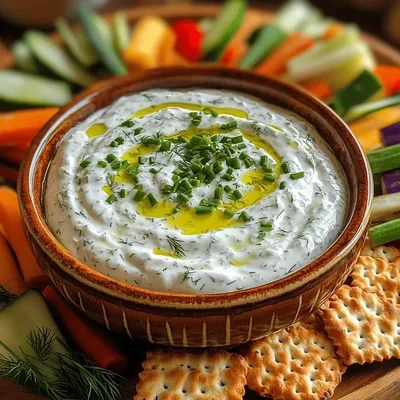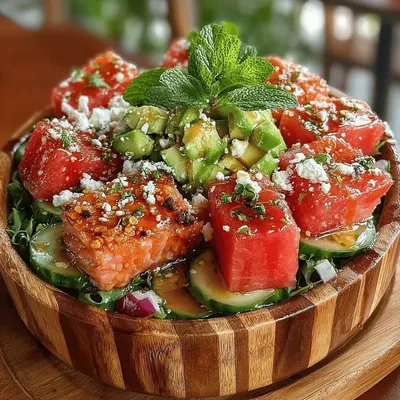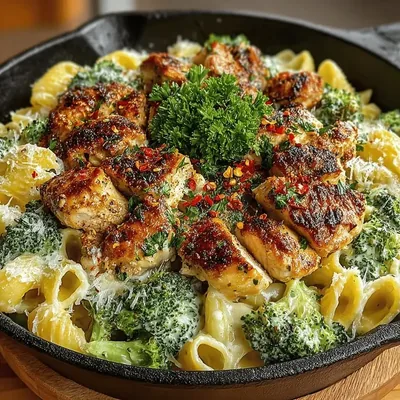There’s something irresistibly comforting about a warm roll fresh from the oven, and when rosemary and garlic join the party, the experience becomes unforgettable. These Rosemary Garlic Dinner Rolls combine buttery softness with herb‑infused aromatics, creating a side dish that feels both elegant and home‑y.
What sets this recipe apart is the balance of fragrant rosemary, mellow garlic, and a touch of honey that caramelizes the crust, giving each roll a golden‑brown finish and a subtle sweetness.
Everyone from picky eaters to seasoned food lovers will adore these rolls, making them perfect for holiday spreads, casual weeknight meals, or as a cozy accompaniment to soups and stews.
The process is straightforward: mix a simple yeasted dough, fold in fresh herbs and garlic, allow two gentle rises, then bake until puffed and lightly crisp. The result is a batch of rolls that fill the kitchen with aroma and the table with comfort.
Why You'll Love This Recipe
Herb‑Forward Aroma: Fresh rosemary and garlic infuse the dough, delivering a scent that makes the rolls irresistible the moment they come out of the oven.
Soft, Pillowy Texture: The gentle rise and generous butter create a tender crumb that melts in your mouth, perfect for sopping up sauces.
Easy to Scale: Whether you need a dozen for a family dinner or a larger batch for a party, the recipe scales without losing its signature flavor.
Versatile Pairings: Serve them alongside soups, salads, or as a base for sliders—their subtle seasoning complements a wide range of main dishes.
Ingredients
The backbone of any great roll is a reliable yeast dough, and here we enhance it with aromatic herbs and a touch of sweetness. Fresh rosemary provides piney brightness, while minced garlic adds depth without overwhelming. A splash of honey helps the crust achieve that beautiful caramel hue, and butter keeps the crumb luxuriously soft. Together these ingredients create a harmonious balance of flavor, texture, and aroma.
Dry Ingredients
- 4 cups (500 g) all‑purpose flour
- 2 ¼ teaspoons (1 packet) active dry yeast
- 2 tablespoons granulated sugar
- 1 ½ teaspoons fine sea salt
Liquids & Fats
- 1 ¼ cups warm water (110°F/43°C)
- ¼ cup whole milk, warmed
- 3 tablespoons unsalted butter, melted
- 1 large egg, lightly beaten (for egg wash)
Herbs & Flavorings
- 2 tablespoons fresh rosemary, finely chopped
- 2 cloves garlic, minced
- 1 tablespoon honey
The flour provides structure, while the yeast creates lift and a tender crumb. Sugar feeds the yeast and contributes a subtle sweetness that pairs beautifully with honey‑glazed tops. Salt enhances every flavor, and the warm liquids activate the yeast for a reliable rise. Butter and milk enrich the dough, making it soft and slightly sweet. Finally, rosemary, garlic, and honey bring aromatic depth and a glossy finish that turns ordinary rolls into a comforting centerpiece.
Step-by-Step Instructions

Preparing the Dough
In a large mixing bowl, whisk together the flour, yeast, sugar, and salt. In a separate jug, combine warm water, warmed milk, melted butter, and the beaten egg. Pour the liquid mixture into the dry ingredients and stir until a shaggy dough forms.
Kneading & First Rise
- Knead the dough. Turn the dough onto a lightly floured surface and knead for 8‑10 minutes, or until smooth and elastic. Proper kneading develops gluten, which gives the rolls their airy crumb.
- First rise. Lightly oil the mixing bowl, place the dough inside, cover with a clean towel, and let it rise in a warm spot for 1‑1½ hours, or until doubled in size. This fermentation stage builds flavor and lift.
Incorporating Herbs & Shaping
- Fold in aromatics. Punch down the risen dough, then sprinkle the chopped rosemary, minced garlic, and honey over it. Gently fold the mixture until the herbs are evenly distributed without over‑working the dough.
- Shape the rolls. Divide the dough into 12 equal pieces (about 80 g each). Roll each piece into a smooth ball, then place them snugly on a parchment‑lined baking sheet, spacing them about 1 inch apart.
- Second rise. Cover the tray loosely with foil and let the rolls rise for 30‑35 minutes, until puffed and nearly doubled. This short proof ensures a light interior.
Baking & Finishing
- Egg wash. Brush each roll gently with the beaten egg. This creates a glossy, golden crust once baked.
- Bake. Preheat the oven to 375°F (190°C). Place the tray in the middle rack and bake for 18‑20 minutes, or until the tops are deep golden and the rolls sound hollow when tapped.
- Cool slightly. Remove the rolls from the oven, transfer to a wire rack, and let them rest for 5 minutes. This brief cooling sets the crumb while keeping the interior soft.
Tips & Tricks
Perfecting the Recipe
Temperature of liquids. Keep water and milk between 105‑115°F (40‑46°C) to activate yeast without killing it, ensuring a reliable rise.
Gentle handling. After the first rise, handle the dough lightly to preserve the air pockets that give the rolls their light texture.
Flavor Enhancements
For an extra pop, drizzle a thin layer of melted butter mixed with a pinch of flaky sea salt over the rolls immediately after baking. A splash of fresh lemon zest added to the herb mixture brightens the overall flavor profile.
Common Mistakes to Avoid
Avoid using water that’s too hot; it will denature the yeast and stall the rise. Also, don’t over‑bake—the rolls should stay soft inside. If the crust darkens too quickly, tent the tray with foil halfway through baking.
Pro Tips
Use a stand mixer. If you have a dough hook, it speeds up kneading and develops gluten more consistently than hand‑kneading.
Steam the oven. Place a shallow pan of hot water on the lower rack during the first 10 minutes of baking; steam helps the rolls achieve a glossy, tender crust.
Check internal temperature. When the rolls reach 190°F (88°C) at the center, they’re perfectly baked without being dry.
Store with a damp towel. If you need to keep them warm for a short period, cover the tray loosely with a clean, slightly damp kitchen towel to prevent crust hardening.
Variations
Ingredient Swaps
Swap fresh rosemary for thyme or sage for a different herbaceous note. Replace garlic with roasted shallots for a milder, sweeter flavor. For a richer dough, substitute half of the water with buttermilk, which adds tang and extra tenderness.
Dietary Adjustments
Use a gluten‑free flour blend (ensure it contains xanthan gum) and a gluten‑free yeast to keep the texture light. For a dairy‑free version, replace butter with coconut oil and use plant‑based milk. A low‑sugar adaptation can swap honey for a few drops of liquid stevia.
Serving Suggestions
Pair the rolls with a hearty beef stew, creamy mushroom soup, or a simple mixed greens salad dressed with vinaigrette. For brunch, split them and fill with scrambled eggs and smoked salmon. They also make an excellent base for mini sliders with pulled pork or grilled vegetables.
Storage Info
Leftover Storage
Allow any leftover rolls to cool completely, then place them in an airtight container or zip‑top bag. Store in the refrigerator for up to 4 days. For longer keeping, wrap each roll tightly in plastic wrap, then foil, and freeze for up to 3 months.
Reheating Instructions
Reheat refrigerated rolls in a 350°F (175°C) oven, covered with foil, for 10‑12 minutes until warm and soft. Frozen rolls benefit from a 15‑minute bake at the same temperature, covered, then uncovered for the final 3 minutes to restore crust crispness. A quick microwave burst (15‑20 seconds) works in a pinch, but the oven yields the best texture.
Frequently Asked Questions
This Rosemary Garlic Dinner Rolls recipe delivers soft, aromatic bread that feels both comforting and sophisticated. By following the step‑by‑step guide, mastering the rise, and applying the tips, you’ll consistently produce rolls that impress every guest. Feel free to experiment with herb swaps or dietary tweaks—cooking is a playground for creativity. Serve them hot, share them generously, and enjoy the warm, herb‑filled hug of each bite.











